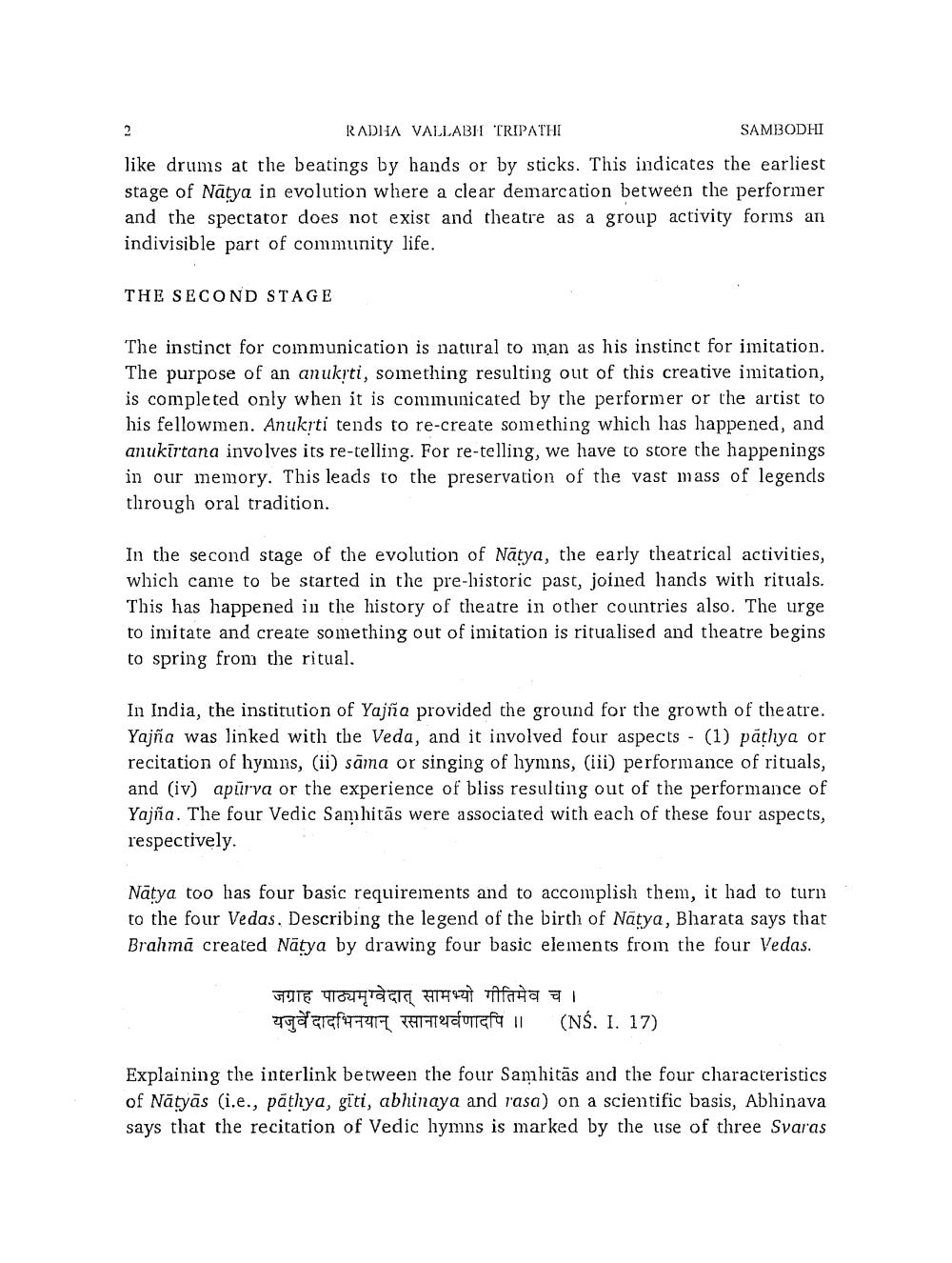Book Title: Sambodhi 1994 Vol 19 Author(s): Jitendra B Shah, N M Kansara Publisher: L D Indology Ahmedabad View full book textPage 6
________________ RADHA VALLABH TRIPATHI SAMBODHI like drums at the beatings by hands or by sticks. This indicates the earliest stage of Natya in evolution where a clear demarcation between the performer and the spectator does not exist and theatre as a group activity forms an indivisible part of community life. THE SECOND STAGE The instinct for communication is natural to man as his instinct for imitation. The purpose of an anuk’ti, something resulting out of this creative imitation, is completed only when it is communicated by the performer or the artist to his fellowmen. Anukrti tends to re-create something which has happened, and anukīrtana involves its re-telling. For re-telling, we have to store the happenings in our memory. This leads to the preservation of the vast mass of legends tlırough oral tradition. In the second stage of the evolution of Natya, the early theatrical activities, which came to be started in the pre-historic past, joined hands with rituals. This has happened in the history of theatre in other countries also. The urge to imitate and create something out of imitation is ritualised and theatre begins to spring from the ritual. In India, the institution of Yajño provided the ground for the growth of theatre. Yajña was linked with the Veda, and it involved four aspects - (1) patlıya or recitation of hymns, (ii) sama or singing of hymns, (iii) performance of rituals, and (iv) apurva or the experience of bliss resulting out of the performance of Yajia. The four Vedic Samhitās were associated with each of these four aspects, respectively. Natya too has four basic requirements and to accomplish them, it had to turn to the four Vedas. Describing the legend of the birth of Natya, Bharata says that Brahmă created Natya by drawing four basic elements from the four Vedas. जग्राह पाठ्यमृग्वेदात् सामभ्यो गीतिमेव च । rcfTTY THT dUrgfall (NŚ. I. 17) Explaining the interlink between the four Samhitās and the four characteristics of Nātyās (i.e., pathya, gīti, abhinaya and rasa) on a scientific basis, Abhinava says that the recitation of Vedic hymns is marked by the use of three SvarasPage Navigation
1 ... 4 5 6 7 8 9 10 11 12 13 14 15 16 17 18 19 20 21 22 23 24 25 26 27 28 29 30 31 32 33 34 35 36 37 38 39 40 41 42 43 44 45 46 47 48 49 50 51 52 53 54 55 56 57 58 59 60 61 62 ... 182
